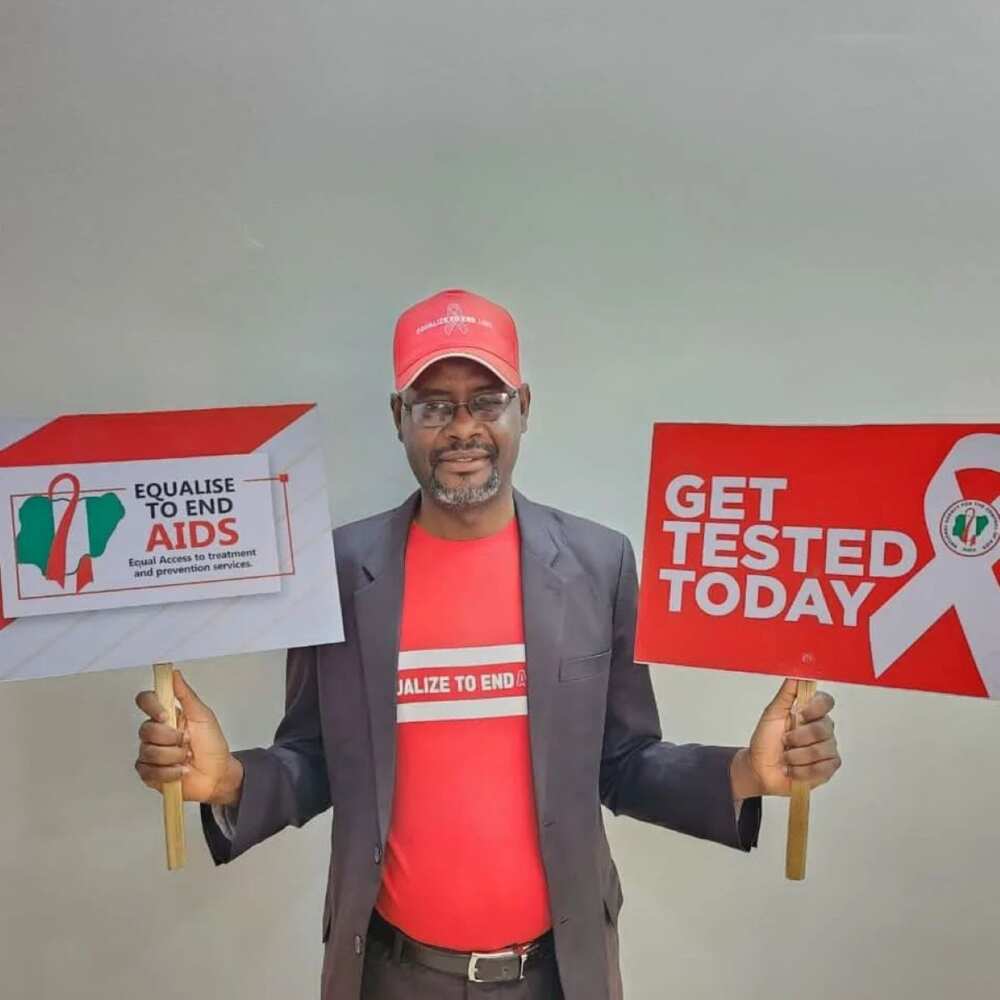2022 World AIDS Day: 'Over 1.6 Million Nigerians on HIV Treatment,' FG says
- The National Agency for the Control of AIDS (NACA) has said that over 1.6 million Nigerians are currently receiving HIV treatment across the country
- This disclosure was made by the director-general of NACA, Gambo Aliyu on Thursday, November 24
- Aliyu assured that NACA will continue to put efforts in place to ensure that HIV prevalence in tackled with an increased level of equal opportunity to treatment and access to commodities needed by People Living with HIV/AIDS
Over 1.6 million Nigerians have been captured under the nation's HIV treatment plan as of the end of September 2022, the director-general of the National Agency for the Control of AIDS, Gambo Aliyu has said.
Aliyu while speaking at a press conference in commemoration of the 2022 World AIDS Day a total of 1,619,133 persons on HIV treatment represents a significant leap when compared to 838,020 persons in 2017.

Source: Facebook
He noted that as Nigeria commences the process of marking the 2022 World AIDS Day, it is important to re-emphasize that unequal access to HIV prevention and treatment services increases the prevalence of HIV among vulnerable population groups.
This year's World AIDS Day is themed, ‘Equalise to end AIDS: Equal access to treatment and prevention services.’
PAY ATTENTION: Join Legit.ng Telegram channel! Never miss important updates!
Aliyu noted that this year’s World AIDS Day seeks to promote equal access across populations that are marginalized among vulnerable and key affected population groups by removing economic, social, cultural and legal barriers to HIV prevention services across population groups that are vulnerable to HIV.
According to the NACA DG, Nigeria's success story is evident from the significant dip in the HIV prevalence of 3.4% in 2017 to a population-based prevalence of 1.3% in 2018
He said:
"Our treatment sites have increased from 251 in 2007 to 2,262 in 2020, and new HIV infections gradually declined from 103,404 in 2019 to 92,323 in 2021, with significant growth in key population treatment centres.
"Ten in 2017 with a coverage of 16,147 to 118 in 2021 with coverage of over 221,010."
Accessibility of treatment
In addition, he noted that pre-COVID-19 molecular laboratory assessments done in 27 sites are now in over 100 sites and accessible for prevention and treatment purposes
Also, through alignment 2.0 HIV prevention and treatment is shifting ownership to states while guaranteeing continued partnership and support from donors agency with the launch of the N62 billion HIV Trust Fund of Nigeria (HTFN).
The trust fund constitutes a further step towards sustained country-level funding and ownership of the National Response.
Aliyu further called for sustained efforts towards controlling the epidemic while pushing for increased availability, quality and suitability of services, for HIV treatment, testing and prevention, so that everyone is well-served.
He assured that access to prevention, treatment, care and support services will be intensified for hard-to-reach populations especially those communities circumscribed by conflict.
Aliyu said:
"Finally, Nigeria is happy to join the Global community to affirm that “We can end AIDS - if we end the inequalities which perpetuate it."
Also speaking, the national coordinator of the National AIDS, Sexuallly Transmitted Infections Control and Hepatitis Programme, Federal Ministry of Health, Akudo Ikpeazu, said that the Federal Ministry of Health, through NASCP, reaffirms its commitment to continue to push for programs and policies aimed at addressing these inequalities.
Ikpeazu added that the Global Alliance to end AIDS in Children by 2030, which Nigeria recently joined currently made up of 12 countries committed to building momentum to address gaps, mutual accountability and galvanizing action for results.
The countries include Angola, Cameroon, Cote d’Ivoire, DRC, Kenya, Mozambique, SA, Tanzania, Uganda, Zambia and Zimbabwe.
Her words:
"In this regard we will focus on the four pillars of the Alliance which are early testing and optimized treatment for children, closing treatment gaps for pregnant and breastfeeding women living with HIV, preventing and detecting new infections among adolescent girls and women, and addressing structural barriers that hinder access to services.
"As we step-up the fight to end AIDS."
People living with HIV go tough on Ebonyi govt., list hospitals' sins
Legit.ng previously reported that Nigeria had flagged off the 2021 World AIDS Days with the theme, End Inequality, End AIDS Through Financing.
The flag-off ceremony was organised by the National Agency for the Control of AIDS in Abuja on Tuesday, November 30 Also, emergency calls were made to ensure state governments sit up in the fight against HIV/AIDS in Nigeria.
There was also a call for the inclusion of inmates in various correctional facilities in the HIV/AIDS treatment plan.
Reducing HIV/AIDs transmission among persons who inject drug
In addition, the country is on the move to reduce the spread of HIV among people who inject drug (PWIDs).
Aliyu said through a new evaluation report Nigeria would be able to reduce HIV transmission among 44,000 PWIDs.
The NACA DG said that with the findings of the evaluation being put to effective use, it will enable the country to plan for the about 44,000 persons who inject drug in Nigeria.
Source: Legit.ng





